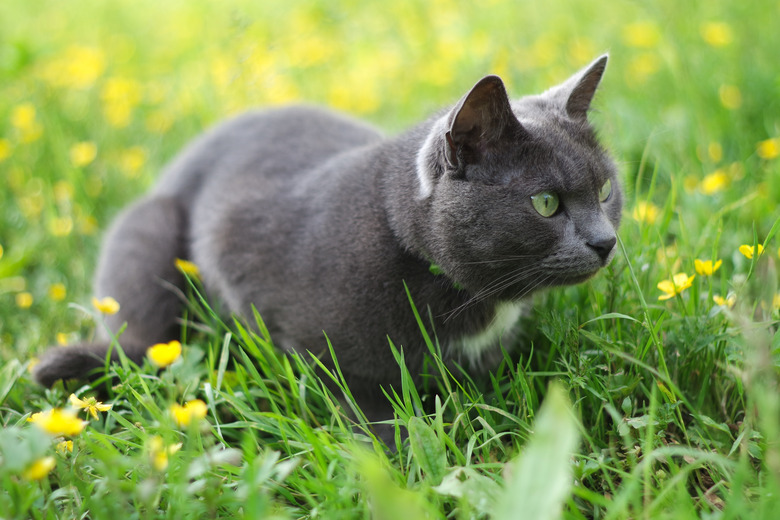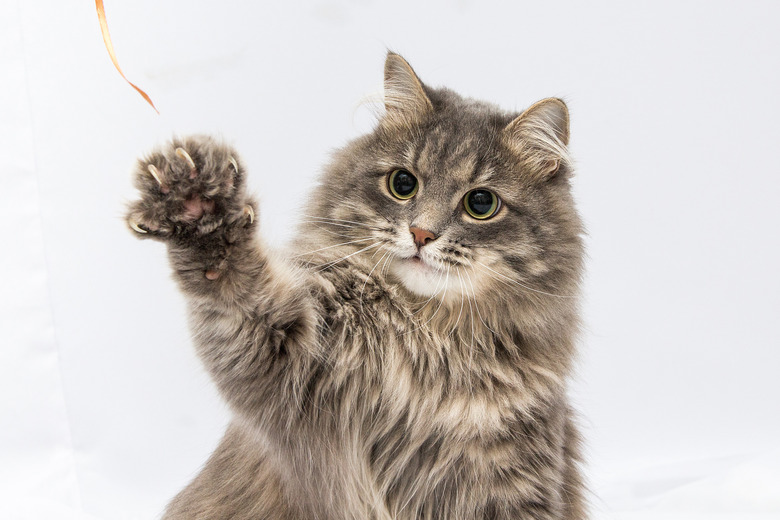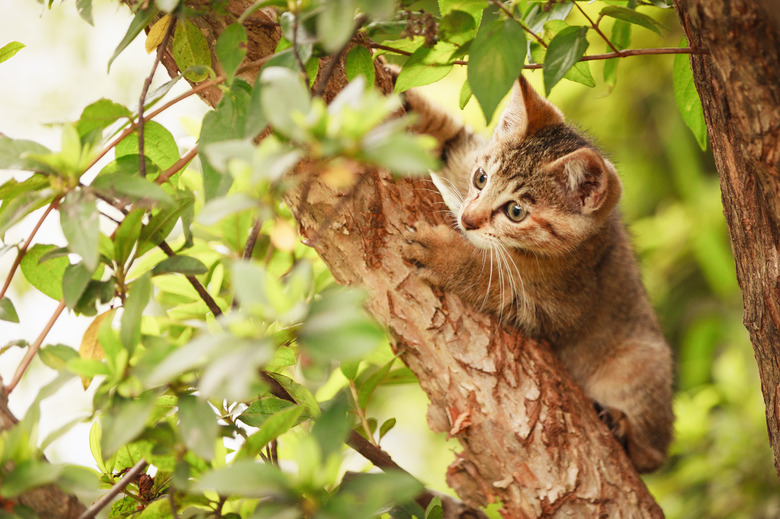All About Carpal Whiskers, Those Weird Whiskers On Your Cat's Front Legs
Cat owners everywhere know that cats have whiskers on each side of their face. You've probably also noticed their long wispy whiskery "eyebrows." But have you noticed that there are also "whiskers" on other parts of a cat's body? When they aren't on the face, these tactile hairs aren't called whiskers. But they are one of several reasons why cats are so successful as hunters.
How do cat whiskers work?
How do cat whiskers work?
One of the characteristics that differentiates mammals from other animals is that mammals have hair all over their bodies. Cat hair is quite different from human hair. In fact, like many mammals, cats have hairs that have special functions, that are extensions of their already acute senses. Whiskers grow from hair follicles like normal hair, but unlike normal hair, these tactile hairs are coarser and thicker than regular hair and have roots that are three times deeper.
Whiskers are packed with more blood and nerve endings than regular hairs, making them more like sensory organs than simply hairs. These specialized hairs are officially called "vibrissae," or tactile hair. The word vibrissae derives from the Latin "vibrio" meaning to vibrate.
Vibrissae are found on various parts of the body, including long whiskers above the eyes, on the chin, on the front legs, near the ears, and above the upper lip. Just as eyes are for seeing and ears are for hearing, vibrissae are more like extensions of the skin and perform a special touch and sense function, much like antennae on insects.
Carpal whiskers on a cat
Carpal whiskers on a cat
Whiskers on the back of their front legs are called carpal whiskers. Unlike the facial vibrissae which aid in spatial awareness and information from their surrounding environment, carpal whiskers help when hunting prey. These sensitive hairs help make up for the fact that cats can't see particularly well right up close.
The cats are not able to control the movement of these vibrissae as they can the ones on their face. These are one of the reasons that cats are such stellar hunters — the whiskers on their front legs transmit important information about the prey in their paws. They can sense movement and position, so they know where to bite or hold their prey. These whiskers give a cat similar information whether they are playing with a toy or fighting with another cat, for instance.
What do cat whiskers do?
What do cat whiskers do?
Cats use their whiskers in numerous ways. If a cat is trying to get into a tiny space, whether it be an empty box or a crawlspace under a house, a cat's whiskers will let them know if they can fit into the space. If something gets close to their face, the whiskers will vibrate to let them know. Whiskers on the back of the legs help your cat climb trees. The carpal whiskers are useful when hunting prey, to let the cat know if there's movement from a prey animal under their feet or in their paws.
Although whiskers are called "tactile hairs," it's important to note that these whiskers don't actually have nerve endings in themselves — although you shouldn't do it, you could cut a cat's whiskers and it won't cause them pain. By detecting subtle changes in air currents, cat whiskers and other vibrissae transmit information to sensory cells which the brain then interprets as a variety of sensations, such as the size, shape, and speed of nearby objects, which helps cats navigate the world.
Although cutting your cat's whiskers won't cause them pain, plucking or pulling on the whiskers will be painful for your cat. Without their tactile hairs — both on their face and the carpal whiskers on other parts of their body — your cat will lose much of their sensory perception that tells them much about the world around them. Without these important sensory organs, a cat could be confused.
In conclusion
In conclusion
Vibrissae is the official name of special tactile hairs that grow from regular hair follicles like regular hair, but are much more sensitive than regular hairs. Carpal whiskers are vibrissae that are located on the front legs of a cat's body. These are more like extensions of skin — they are sensitive sensory organs that tell the cat information if it is trying to climb a tree, for instance, or about the prey it's holding on to in its paws. Being able to sense movement from changes in air flow or from things that are close to it allows that cat to navigate the world and be a successful hunter.



